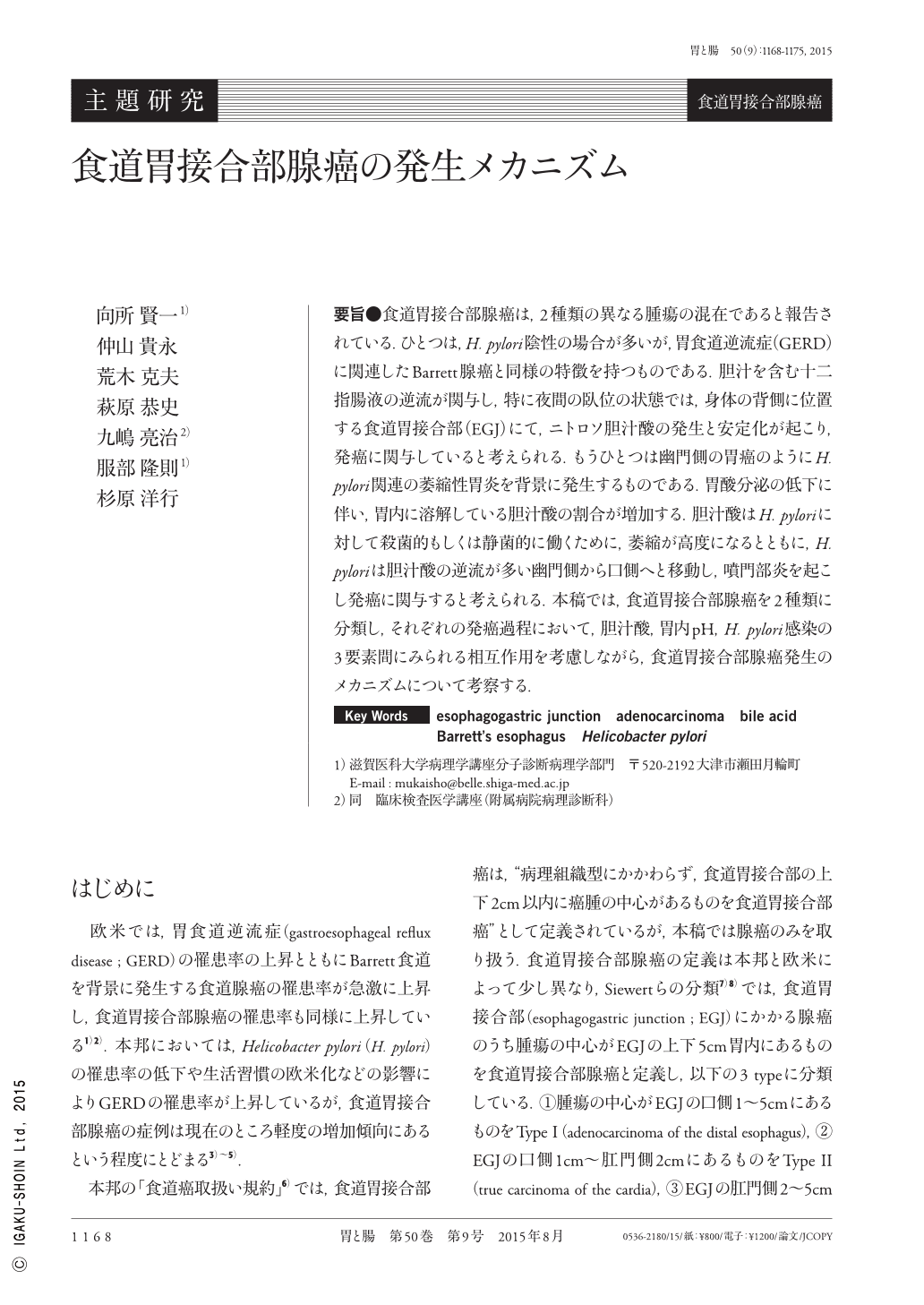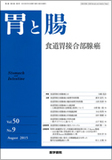Japanese
English
- 有料閲覧
- Abstract 文献概要
- 1ページ目 Look Inside
- 参考文献 Reference
要旨●食道胃接合部腺癌は,2種類の異なる腫瘍の混在であると報告されている.ひとつは,H. pylori陰性の場合が多いが,胃食道逆流症(GERD)に関連したBarrett腺癌と同様の特徴を持つものである.胆汁を含む十二指腸液の逆流が関与し,特に夜間の臥位の状態では,身体の背側に位置する食道胃接合部(EGJ)にて,ニトロソ胆汁酸の発生と安定化が起こり,発癌に関与していると考えられる.もうひとつは幽門側の胃癌のようにH. pylori関連の萎縮性胃炎を背景に発生するものである.胃酸分泌の低下に伴い,胃内に溶解している胆汁酸の割合が増加する.胆汁酸はH. pyloriに対して殺菌的もしくは静菌的に働くために,萎縮が高度になるとともに,H. pyloriは胆汁酸の逆流が多い幽門側から口側へと移動し,噴門部炎を起こし発癌に関与すると考えられる.本稿では,食道胃接合部腺癌を2種類に分類し,それぞれの発癌過程において,胆汁酸,胃内pH,H. pylori感染の3要素間にみられる相互作用を考慮しながら,食道胃接合部腺癌発生のメカニズムについて考察する.
There are two distinct etiologies of cardia cancer subtypes, one of which is associated with gastroesophageal reflux. It predominantly occurs in patients without Helicobacter pylori(H. pylori)infection and resembles esophageal adenocarcinoma. Additionally, it can be developed in an environment of high volume reflux. N-nitroso compounds, generated at night in the gastric juice with the refluxate(including bile acids), and a highly acidic condition also contribute to carcinogenesis by acting as a stabilizer of N-nitroso bile acids. The other etiology is associated with H. pylori atrophic gastritis and resembles noncardia cancer. It can be associated with the changing colonization of H. pylori from the distal to the proximal stomach with atrophic gastritis caused by a high concentration of soluble bile acids in an environment of low acid production. Under these conditions, soluble bile acids are likely to act as a bactericide or chemorepellent for H. pylori in the distal stomach. In this manuscript, we describe the potential mechanisms involved in the development of gastric cardia adenocarcinoma by elucidating the interactions among pH, H. pylori, and bile acids.

Copyright © 2015, Igaku-Shoin Ltd. All rights reserved.


